Transcription of Behavior Guidance for the Pediatric Dental Patient
1 254 RECOMMENDATIONS: BEST PRACTICESREFERENCE MANUAL V 40 / NO 6 18 / 19 PurposeThe American Academy of Pediatric Dentistry (AAPD) recognizes that Dental care is medically necessary for the pur- pose of preventing and eliminating orofacial disease, infection, and pain, restoring the form and function of the dentition, and correcting facial disfiguration or Behavior Guidance techniques, both nonpharmalogical and pharma- logical, are used to alleviate anxiety, nurture a positive Dental attitude, and perform quality oral health care safely and efficiently for infants, children, adolescents, and persons with special health care needs. Selection of techniques must be tailored to the needs of the individual Patient and the skills of the practitioner. The AAPD offers these recommendations to educate health care providers, parents, and other interested parties about influences on the Behavior of Pediatric Dental patients and the many Behavior Guidance techniques used in contemporary Pediatric dentistry.
2 Information regarding protective stabilization and pharmacological Behavior man- agement for Pediatric Dental patients is provided in greater detail in additional AAPD clinical practice on Behavior Guidance were developed by the Clinical Affairs Committe, Behavior Management Subcommittee and adopted in 1990. This document is a revision of the previous version, last revised in 2011. This document was developed subsequent to the AAPD s 1988 conference on Behavior management and modified follow- ing the AAPD s symposia on Behavior Guidance in 2003 and ,6 This update reflects a review of the most recent proceedings, other Dental and medical literature related to be- havior Guidance of the Pediatric Patient , and sources of recognized professional expertise and stature including both the academic and practicing Pediatric Dental communities and the standards of the Commission on Dental In addition, a search of the PubMed electronic database was performed using the terms.
3 Behavior management in children, Behavior management in dentistry, child Behavior and dentistry, child and Dental anxiety, child preschool and Dental anxiety, child personality and test, child preschool per- sonality and test, Patient cooperation, dentists and personality, dentist- Patient relations, dentist-parent relations, attitudes of parents to Behavior management in dentistry, Patient assessment in dentistry, pain in dentistry, treatment deferral in dentistry, toxic stress, cultural factors affecting Behavior in dentistry, culture of poverty, cultural factors affecting family compliance in dentistry, poverty and stress and effects on Dental care, social risks and determinants of health in dentistry, gender shifts in dentistry, protective stabilization and dentistry, medical immobilization, restraint and dentistry, and Patient restraint for treatment; fields: all; limits: within the last 10 years, humans, English, birth through age 18.
4 There were 5,843 articles matching these criteria. Papers for review were chosen from this list and from references within selected articles. When data did not appear sufficient or were inconclusive, recommendations were based upon expert and/or consensus opinion by experienced researchers and Dental practitioners are expected to recognize and effectively treat childhood Dental diseases that are within the knowledge and skills acquired during their professional education. Safe and effective treatment of these diseases requires an under- standing of and, at times, modifying the child s and family s response to care. Behavior Guidance is the process by which practitioners help patients identify appropriate and inappro-priate Behavior , learn problem solving strategies, and develop impulse control, empathy, and self-esteem. This process is a continuum of interaction involving the dentist and Dental team, the Patient , and the parent; its goals are to establish communication, alleviate fear and anxiety, deliver quality Dental care, build a trusting relationship between dentist/staff and child/parent, and promote the child s positive attitude toward oral health care.
5 Knowledge of the scientific basis of Behavior Guidance and skills in communication, empathy, tolerance, cultural sensitivity, and flexibility are requisite to proper im- plementation. Behavior Guidance should never be punishment for misbehavior, power assertion, or use of any strategy that hurts, shames, or belittles a of child behaviorsPatient attributesA dentist who treats children should be able to accurately assess the child s developmental level, Dental attitudes, and temperament and to anticipate the child s reaction to care. The ABBREVIATIONS AAPD: American Academy of Pediatric Dentistry. ITR: Interim therapeutic Guidance for the Pediatric Dental Patient Review CouncilCouncil on Clinical AffairsLatest Revision2015 AMERICAN ACADEMY OF Pediatric DENTISTRYRECOMMENDATIONS: BEST PRACTICES 255response to the demands of oral health care is complex and determined by many factors.
6 Developmental delay, physical/mental disability, and acute or chronic disease are potential reasons for noncompliance during the Dental appointment. In the healthy communicating child, behavioral influences often are more subtle and difficult to identify. Contributing factors can include fears, general or situational anxiety, a previous un-pleasant and/or painful Dental /medical experience, inadequate preparation for the encounter, and parenting ,22-24 Only a minority of children with uncooperative Behavior have Dental fears, and not all fearful children present Dental be- havior Guidance ,11,12 Fears may occur when there is a perceived lack of control or potential for pain, especially when a child is aware of a Dental problem or has had a painful health care experience. If the level of fear is incongruent with the circumstances and the Patient is not able to control impulses, disruptive Behavior is likely.
7 Cultural and linguistic factors also may play a role in atti- tudes and cooperation and Behavior Guidance of the Since every culture has its own beliefs, values, and practices, it is important to understand how to interact with patients from different cultures and to develop tools to help navigate their encounters. Qualified interpreters may be required for those families who have limited English ,17 The dentist/staff must listen actively and address the Patient s/ parents concerns in a sensitive and respectful influencesParents influence their child s Behavior at the Dental office in several ways. Positive attitudes toward oral health care may lead to the early establishment of a Dental home. Early pre- ventive care leads to less Dental disease, decreased treatment needs, and fewer opportunities for negative ,19 Parents who have had negative Dental experiences8,20,21 as a Patient may transmit their own Dental anxiety or fear to the child thereby adversely affecting her attitude and response to ,20-22 Long term economic hardship and inequality can lead to parental adjustment problems such as depression, anxiety, irritability, substance abuse, and Parental depression may result in decreased protection, caregiving, and discipline for the child, thereby placing the child at risk for a wide variety of emotional and Behavior In America, evolving parenting styles22.
8 23 and parental behaviors influenced by economic hardship have left practitioners challenged by an increasing number of children ill-equipped with the coping skills and self-discipline necessary to contend with new Frequently, parental expectations for the child s response to care ( , no tears) are unrealistic, while expectations for the dentist who guides their Behavior are to Dental environment The non-clinical office staff plays an important role in Behavior Guidance . The scheduling coordinator or receptionist will have the first contact with a prospective parent, usually through a telephone conversation. The tone of the call should be welcoming and pleasant. The scheduling coordinator should actively engage the parent to determine the primary Patient concerns, including special health care or cultural/linguistic needs.
9 The conversation can provide insights into parental anxiety or stress. The staff should help set expectations for the initial visit by providing relevant information and may suggest a preappointment visit to the office to meet the doctor and staff and tour the Before the call ends, staff should offer the office s website and directions and ask if there are any further questions. Such encounters serve as educational tools that help to allay fears and better prepare the parent and child for the first receptionist is usually the first staff member the child meets upon arrival at the office. The caring and assuring man- ner in which the child is welcomed into the practice at the first and subsequent visits is ,26 A child-friendly reception area ( , age-appropriate toys and games) can both provide a distraction and indicate that the staff has a genuine concern for young patients.
10 These first impressions may influence future assessmentAn evaluation of the child s cooperative potential is essential for treatment planning. No single assessment method or tool is completely accurate in predicting a Patient s Behavior , but awareness of the multiple influences on a child s response to care can aid in treatment planning. Initially, information can be gathered from the parent through questions regarding the child s cognitive level, temperament/personality charac-teristics,9,12,27-29 anxiety and fear,8,12,30 reaction to strangers,31 and Behavior at previous medical/ Dental visits, as well as how the parent anticipates the child will respond to future Dental treatment. Later, the dentist can evaluate cooperative potential by observation of and interaction with the Patient . Whether the child is approachable, somewhat shy, or definitely shy and/or withdrawn may influence the success of various communicative techniques.




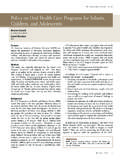





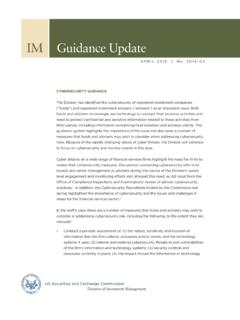
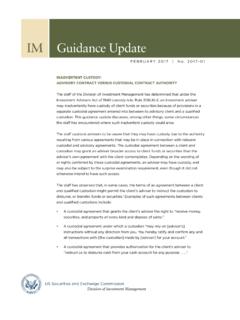

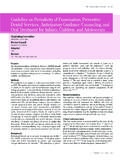
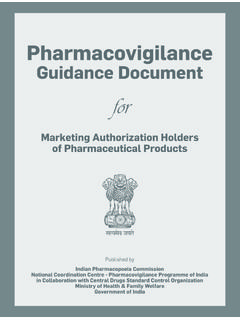
![20 2011 10 1 P -:HSTCQE=VVZW][ - OECD.org - OECD](/cache/preview/e/e/2/6/b/1/b/c/thumb-ee26b1bc3ac51fe82000b356cddeac23.jpg)